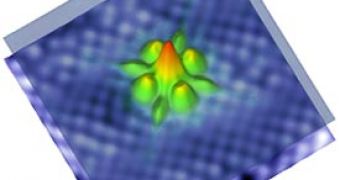Superconductors are a type of materials that exhibit zero electrical resistance and the exclusion of the interior magnetic field (the Meissner effect) at extremely low temperatures, usually below -140 degrees Celsius. They are used in many applications, like MRI medical imaging scanners, levitating trains and power lines.
However, one of the greatest unsolved mysteries of condensed matter physics is the explanation on how electrons pair up in copper-oxide superconductors at temperatures above 100 Kelvins. A new theory of University of Illinois physicist Philip Phillips says that there may be a strange particle involved in the process.
This theoretical particle could be doubly charged, as opposed to known electrically charged particles, and could be mediating interactions between electrons located in planes that are filled with copper and oxygen atoms.
However, this hypothetical particle would be identical to the Cooper pair, which carries charge in a superconductor, it would actually be a boson that could carry twice the charge of an electron, a behavior never previously observed.
Theoretical arguments support the existence of this particle, as it would be the result of strong repulsions among electrons and would be able to persist both above and below the superconducting transition temperature.
Even some previous experimental results tend to support its existence, although it has never been clearly proven; these experiments showed that the theoretical charge of this particle would bind to the hole in the electron-hole pair to produce the missing state, thus possibly filling the gap in the general behavior of superconductors.
Philips believes that it's exactly this particle that is responsible for the normal state of the cuprates, including the strange "pseudogap state," observed in earlier experiments, the condition in which some electrons in the material seem to be paired even at temperatures above where superconductivity sets in.

 14 DAY TRIAL //
14 DAY TRIAL //